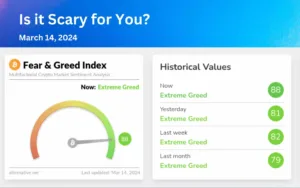Technical indicators are crucial in analyzing financial markets and assisting traders in making informed decisions. They provide valuable insights into price movements, trends, and potential reversals. In this article, we will delve into five essential technical indicators: RSI (Relative Strength Index), MACD (Moving Average Convergence Divergence), Volume, Support, and Resistance. We will also discuss how to use them in your trading strategies effectively.
Relative Strength Index (RSI)
The RSI is a momentum oscillator that measures the speed and change of price movements. It oscillates between 0 and 100, indicating overbought conditions when above 70 and oversold conditions when below 30. Traders often use RSI to identify potential trend reversals and generate buy or sell signals. A reading above 50 suggests bullish momentum, while a reading below 50 indicates bearish sentiment.
To use RSI effectively, traders can look for divergences between price and RSI. For example, if the price is making higher highs while the RSI is making lower highs, it could signal a potential trend reversal. Additionally, traders can wait for RSI to move out of overbought or oversold zones before considering a trade, as extreme readings can indicate a possible price correction.
Moving Average Convergence Divergence (MACD)
MACD is a trend-following momentum indicator that consists of two lines: the MACD line and the signal line. It helps traders identify potential buy or sell signals based on crossovers and divergences. When the MACD line crosses above the signal line, it generates a bullish signal, and when it crosses below, a bearish signal is generated.
Traders also pay attention to the MACD histogram, which represents the difference between the MACD line and the signal line. Increasing histogram bars indicate strengthening momentum, while decreasing bars may suggest a potential trend reversal.
To use MACD effectively, traders can look for crossovers between the MACD line and the signal line to identify entry and exit points. Additionally, divergences between MACD and price can provide insights into potential trend reversals.
Volume
Volume refers to the number of shares or contracts traded in a given period. It provides valuable information about the intensity of market participation and can confirm the strength of price movements. Higher volume during price advances suggests strong buying interest, while higher volume during price declines indicates increased selling pressure.
Traders can use volume to validate the significance of price breakouts or breakdowns. For example, a price breakout accompanied by high volume suggests a strong bullish move, increasing the likelihood of a sustained uptrend. On the other hand, low volume during a price breakout may indicate a false breakout or lack of conviction.
Supports and Resistance
Support and resistance levels are price levels where buying or selling pressure has historically been significant. Support refers to a price level where buying interest exceeds selling pressure, preventing the price from declining further. Resistance, on the other hand, is a price level where selling pressure surpasses buying interest, preventing the price from rising further.
Support and resistance levels can act as potential entry or exit points for traders. When the price approaches a support level, traders may look for bullish reversal signals to enter long positions. Conversely, when the price nears a resistance level, traders may consider bearish reversal signals to enter short positions.
Traders can identify support and resistance levels by analyzing historical price data, trendlines, moving averages or using specialized indicators like pivot points.




